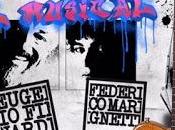Le tre ultime Sonate di Franz Schubert sono tra i miei brani preferiti del repertorio pianistico. Questo grandioso polittico in tre pannelli, composto negli ultimi mesi di vita del compositore, costituisce una grandiosa ricapitolazione di tutti gli elementi stilistici della musica schubertiana. La straordinaria coerenza e unità stilistica della composizione, la grandiosità dell’ impianto formale e le soluzioni armoniche audaci e innovative pongono questi tre brani nel rango dei capolavori assoluti. Oggi voglio parlare della seconda Sonata, quella in la maggiore D. 959. Come già accennato, si tratta della penultima sonata per pianoforte di Schubert, scritta nel settembre 1828 - circa tre mesi prima della sua morte. La composizione di questi tre lavori avviene poco dopo la morte di Beethoven (19 marzo 1827), al cui funerale Schubert aveva partecipato insieme con Hummel. La scomparsa del Maestro fu un evento importante nella vita di Schubert il quale, sebbene profondamente addolorato dalla perdita del musicista che ammirava più di ogni altro, si sentì forse finalmente libero dalla sua influenza. Ognuna di queste ultime tre sonate per pianoforte contiene influssi stilistici riferibili a Beethoven; nel caso di questa Sonata, il Rondo si basa sul motivo dell finale (anch’ esso un Rondò) di gella beethoveniana Sonata No. 16 in sol maggiore.
Il lavoro si apre con una serie di accordi drammatici, maestosi che trapassano gradatamente nella melodia del tema principale Il secondo tema è particolarmente attraente per calore lirico e passionalità Lo sviluppo alterna abilmente momenti di giocosità e di tensione, fino a sfociare in una coda grandiosa e complessa
Molti commentatori ritengono, a mio avviso giustamente, che l’ Andantino sia il più profondo e ispirato dei quattro movimenti. Il suo affascinante tema melodico è sognante e misterioso, ma carico di una indefinibile tensione che sembra sempre sul punto di mutare il clima in una tempesta. Il secondo soggetto infatti accumula gradatamente una grande quantità di tensione, portando infine a un climax drammatico nel quale l’ armonia sembra tratti lacerarsi, prima di risolvere con un recitativo in do diesis maggiore che introduce la ripresa del tema principale, splendidamente arricchita da una melodia in controcanto.
Lo Scherzo è delizioso nella sua atmosfera di leggerezza e buon umore. Un’ effervescenza ottenuta attraverso una scrittura estremamente raffinata nelle soluzioni: ad esempio, si nota come gli accordi arpeggiati che appaiono fin dall’ inizio siano una variante di quelli alquanto oscuri e sinistri che compaiono alla fine dell’ Andantino. Il finale, come già detto, rende omaggio a Beethoven; tuttavia, l’ unico elemento veramente imitativo è l’ autocitazione da parte di Schubert di un tema dal movimento lento della Sonata D. 537.
Le ultime tre Sonate di Schubert restarono inedite alla morte del compositore e vennero pubblicate solo nel 1839, Inizialmente, il pubblico non dimostrò grande interesse per questi lavori, fino a dopo il 1856, quando il musicologo inglese George Grove fu il primo a divulgarne la straordinaria bellezza. Ai giorni nostri, esse sono considerate tra i lavori più maturi e riusciti di tutta la produzione schubertiana e appartengono di diritto al grande repertorio concertistico.
Propongo adesso un contributo critico sulla Sonata in la maggiore. Questa puntuale analisi del brano è stata scritta dal musicologo statunitense David Henning Plylar in un programma di sala per un concerto alla Library of Congress:
The juxtaposition of the late A-major piano sonata, D.959, composed around the same time as the C-minor sonata in 1828, illustrates what may be perceived as alternate universes founded on similar musical principles. The sonatas share certain characteristics, including rhythmic and contour similarities in some of the themes; consider for example the rhythmic content and affect of the opening measures of both sonatas.
What we find with the A-major sonata is an increased flexibility as to what constitutes thematic material of significance. While there are recognizable melodies that reappear as such throughout the work, it is perhaps more profitable to envision Schubert’s motives as multipurpose scaffoldings upon which musical material is pressed, allowing the underlying shape to emerge while clothing the music’s surface in ostensibly new garb. An effect of this approach is that motives coalesce into discrete units that can be deployed in different combinations to develop the musical arguments, often disguising themselves through transformation or new associations.
As an example, consider the opening of the piece, and what constitutes the theme:
Schubert: Piano Sonata in A major, D.959, I: mm. I through 8
Just a few bars later, Schubert writes music that can be conceptualized as “new” or “the same”:
Schubert: Piano Sonata in A major, D.959, I: mm. I5 through 23
These musical corpuscles each go on their own transformational journey within the context of larger phrase structures, occasionally serving as connecting tissue while at other times being stretched to occupy full passages, or appearing quite clearly in thematic guise while at other times serving an accompanimental role. Bearing this caveat about thematic constitution in mind, the principal second theme does have a clear identity, the lyricism of which is brought to the fore by the staccato passage that leads to it. It does not take long before the infectious nature of the “germ-anic” motives take their toll on the second theme as well, leading to further exploration of the opening music.
Transformation is the key to the development section, as the second theme and “thirds” theme live afresh alongside a repeated-chord accompaniment that ties everything together. Again, Schubert’ s achievement throughout this movement is his ability to recontextualize small motivic units within the scope of broader themes and developmental processes. When the recapitulation does come, it is a coalescing of these ideas back into their initial configuration. The movement’ s coda is something of a revelation—the opening music is brought back in a pianissimo setting, this time allowed some space to breathe and develop. What feels like a final resolution in A major is undermined immediately, however, by a subsequent arpeggio in B-flat major. Such a gesture is reminiscent of the playful yet disturbing end to the close of the scherzo movement of Beethoven’ s op. 106 piano sonata (“Hammerklavier”), with its surprising, insistent, pounding B-naturals in the context of B-flat major. Schubert’ s ending remains serene after the flagrant but brief harmonic departure.
The F-sharp-minor Andantino is rightly revered as one of Schubert’s great middle movements. The outer sections are like a dirge in 3/8, with a lamentoso melody (with its characteristic ornamentation) supported by a modest bass line and an occasional secondary voice at poignant moments. The central section explores rather unexpectedterritory—essentially a cadenza with recitative, and inherently dramatic. A beautifully executed C-sharp major passage transitions from the recitative-like material back to the movement’ s main theme, now adorned with a significant countermelody on top, along with a slightly more elaborate bass. The movement closes with a distant rumble of alternating rolled chords in the bass.
A delightful scherzo follows that dispels any remaining gloom. This is playful music that flirts with rolled chords (up and down) across the keyboard’ s compass. Despite the octave displacement, the main theme references the “thirds” idea from the opening movement, as well as the ornament from the second. A contrasting section within this primary area temporarily evokes the cadenza and recitative ideas heard in the Andantino. The Trio section is a light palate cleanser that maintains the childlike demeanor of the movement’ s main body.
The rondo that rounds out the A-major sonata is one of those miracles of brilliance, beauty and structural cohesion. Drawing heavily on motivic ideas first introduced in the opening movement, the rondo theme and ensuing variants and episodes sculpt their own identity from shared genetic material. What makes this confluence of ideas more astounding is that Schubert came up with this rondo theme first—over ten years earlier, in fact, as the Allegretto quasi Andantino movement of his Sonata in A minor (D. 537), composed in 1817. Comparing the two provides a remarkable glimpse of Schubert’s compositional
maturation. The later version is more sophisticated, yet the ease with which it flows (and can be played)
is greater. Despite the unique sound and profile of each of Schubert’s ideas in the rondo, nearly every facet, from rhythmic motives to harmony, figuration and technical requirements (such as cross-hand technique) is derived from material used earlier in the sonata. The employment of these ideas seems so effortless that one may not notice at first blush. Such compositional technique has a buttressing effect on the solidity of the structure as a whole. As the movement progresses, the rondo theme returns in its original state after a pause, except it is also interrupted by silence. Schubert here chops the theme into smaller chunks, each punctuated by silence. This dicey gambit yields dramatic tension relieved by a Presto coda that revisits the world of the first movement’s coda.
Lightning-fast arpeggios now shed some light on the fleeting B-flat major transit near the close of the opening movement. However, the expected cadence is once again interrupted by a pause. The last component of the main theme then reasserts itself, becoming parsed into shorter snippets to propel the music forward before rocketing upward in an A-major arpeggio. Ultimately the movement closes with a transformed but clear reference to the opening of the first movement, including its embedded proto-cadence for the piece as a whole, which is finally given its definitive statement to close this remarkable work.David Henning Plylar
Music Specialist
Library of Congress, Music Division
Tra le grandi incisioni discografiche moderne della Sonata in la maggiore, personalmente io prediligo quelle di Sviatoslav Richter, Alfred Brendel e Maurizio Pollini, che ascoltai dal vivo a Firenze nel 1978 e poi nel 1985 a Pesaro, di Wilhelm Kempff e Nikita Magaloff. Propongo appunto l’ esecuzione di quest’ ultimo pianista, in un video risalente alla fine degli anni Settanta.
Nikita Magaloff (1912 – 1992) nacque a San Pietroburgo, fu allievo di Prokofiev e sposò la figlia del grande violinista Joseph Szigeti. Celebre soprattutto come interprete di Schumann e Chopin, del quale fu il primo a realizzare un’ integrale discografica, in questa esecuzione ci mostra tutta la nobiltà e l’ eleganza aristocratica del suo fraseggio. Un’ interpretazione che va collocata indiscutibilmente tra le versioni di riferimento nella discografia di questo capolavoro.







